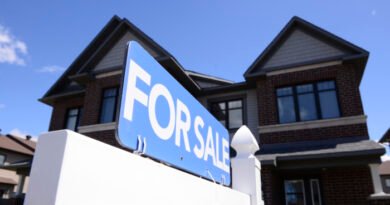Anthony Furey: Canada’s Housing Crisis is Unlikely to Improve any Time Soon
Commentary
One of the most dominant topics in both the Canadian news media and politics is housing. The news features come out on a daily basis. Politicians at all levels of government voice their concerns and make announcements. Some of these announcements come with major cash infusions towards housing initiatives.
The consensus is broad and clear: Housing is too costly. There are too few units being built. The problem needs to be tackled with an all-hands-on-deck approach.
So you’d think with this level of urgency, which has been going on for almost a year now, things would be getting better. But they aren’t really. The housing crisis shows no signs of improving anytime soon.
This is the gist of the latest market outlook report from the Canada Mortgage Housing Corporation (CMHC).
“Expecting lower housing starts in 2024,” reads the report. “There is a slight improvement forecasted over the next 2 years. Supple challenges, notably the lagged effects of higher interest rates, mean that new construction in 2025 – 2026 won’t reach 2021 – 2023 levels.”
The CMHC also forecasts that prices will continue to soar, with the average price of a home in Canada going from $687,000 in 2021 to $814,000 in 2026.
As for rentals, good luck with that. The CMHC explains: “Despite more rental completions, growing demand for rental homes will not be met because the cost of homeownership will lead households to stay in rental housing. Rents will rise and vacancy rates will fall.”
This isn’t just an economic forecast. This is the latest chapter in an ongoing tragedy. Renters are living in cramped quarters. Hardworking young families fear they will never get ahead. Recent immigrants are abandoning Canada and heading back to their home country, while those born here are choosing to move elsewhere.
What are we to make then of all of these government announcements from politicians who are supposedly on the case when it comes to delivering the solutions needed to alleviate this crisis?
To some degree, it’s just that such a complicated economic issue takes a great deal of time to sort out. In other cases, the various funding announcements and policy changes that have been made are really only tinkering at the edges.
Take Prime Minister Justin Trudeau’s latest pledge of $100 million to support businesses involved in modular homes and 3D printing of construction materials. These are interesting innovations that will no doubt play an increasing role in their sector in the years to come, but it’s not like Trudeau’s announcement will bring about instant change.
Government though has still been unwilling to do significant wholesale changes that they know will make a difference. A key one is the amount that taxes, fees, and levies play in the price of new homes.
For example, a 2023 report put out by the Residential Construction Council of Ontario found that development charges, community benefit fees, and HST combined increased the price of a condo unit by almost 30 percent. That’s a whopping amount and government could easily wipe all of this off the price, but they choose not to because they want the revenue instead.
As for demand, this is about the number of people vying for too few units. And that, in great part, involves the number of new people arriving in Canada, whether as new immigrants, students, or other categories. Until very recently, Trudeau has had little appetite to decrease the annual immigration targets that he chose to significantly increase not too long ago, although the feds are now cutting back on student visas and are also beginning to talk about immigration numbers more generally.
Not all regions are facing these challenges the same way, the CMHC explains. “The Prairie provinces are expected to perform well due to their affordable home prices and stronger economic outlook,” the report notes.
The biggest problems are elsewhere: “Ontario and British Columbia are expected to drive the decline in national housing starts for 2024. High home prices will make certain home types unaffordable, while developers may struggle even with apartment construction because of supply-side challenges, particularly financing costs.”
This means that the parts of the country already experiencing it the worst will only go further in the wrong direction. Whether it’s the immigration volume, excessive inflation or other economic metrics, the federal government bears much of the blame.
A viral social media post from The Economist magazine shows how things have changed under our current federal leadership: “When Justin Trudeau took office, a Canadian household earning the median income could cover the costs of owning an average home by spending 39% of their pay, according to RBC. Now that figure is 64%.”
That really says it all.
Views expressed in this article are opinions of the author and do not necessarily reflect the views of The Epoch Times.





